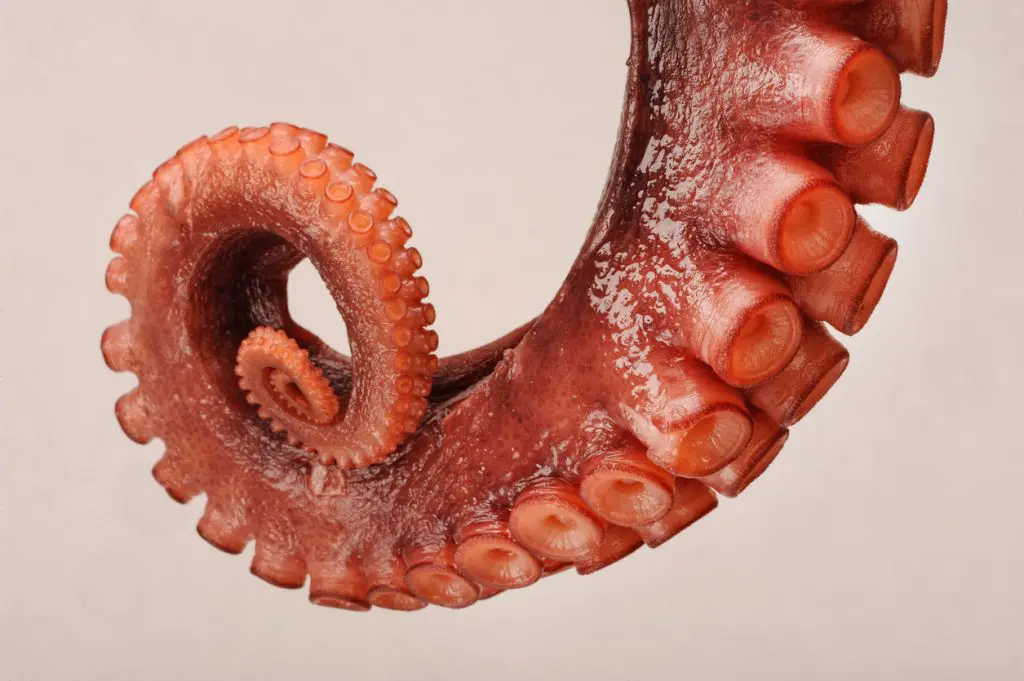Octopuses are known for their incredible mind making them one of the most intelligent sea creatures. We have heard a lot of people ask if octopuses have bones. If not, how do they move their limbs? Let’s clear the air here; octopuses are invertebrates and do not have bones. Invertebrates are cold-blooded animals that neither have nor can develop a spine or backbone. They can live both on the land and in water.
Do Octopuses Have Bones?
No, octopus are invertebrates and do not have bones.
Going back in history, octopuses were termed as mollusks over 500 years ago. Their appearance was somewhat like a snail, with a thick shell covering their squishy bodies (which is very different from how they look now!).
People believe that during the Jurassic and Cretaceous periods, octopuses lost this protective shell. They learned to evolve themselves in the ocean without relying on any solid structure and developed extraordinary anatomical features.
The arms or limbs of octopuses work like an elephant’s trunk or even a tongue. These kinds of structures are called 'muscular hydrostats,’ meaning they are nothing but densely packed muscles.
The central concept of muscular hydrostats falls back to this that the water cavity in these systems cannot be compressed with physiological pressure. Meaning, when you apply pressure on such muscular hydrostatic parts, the water cavity resists the weight by a movement on the other end.
But, if you thought having no bones was a disadvantage, then you’re mistaken. No bones make octopuses malleable, which lets them squeeze into or out of the tiniest openings. This is great if you think of it in terms of hiding from predators or reaching difficult areas to catch prey.
How Does an Octopus Keep Shape with No Bones?
It’s right to think that an octopus should just be a shapeless blotch without any bones, right?
Although octopuses do not have bones, they have a defined anatomical structure like a well-developed muscle tissue, which helps them in the limb movements, and provides the overall shape. Even the skin of an octopus helps give them a structure. An octopus can even flex its body to resemble other animals, such as eels or lionfish.
How Do Octopuses Move Around Without Bones? What Is Their Habitat?
Octopuses mostly live on crevices, reefs, or shells in oceans all across the world. They are slow and do not really move around too much. But when they do, their body combines different arrangements.
Like when an octopus crawls under the seabed, it basically contracts its muscles both lengthwise and crosswise. This shortens their arms and provides agility to the movement. One other thing we all must have come across is buoyancy. Living in an ocean, octopuses use buoyancy to their advantage. Octopuses primarily feed on shrimp, crabs, and other mollusks.
Can Octopuses Regrow Their Arms?
Yes, in case of amputation, if an octopus is caught, it can regrow the arms. It’s almost similar to lizards which can regrow their tails. They use a protein, acetylcholinesterase, to bring back their arms.

Do Octopuses Have Any Rigid Parts in Their Bodies?
While octopuses have no bones whatsoever, one of its two suborders, Cirrina, has a semi-rigid protective shell structure. This shell is somewhat like cartilage which supports the muscle tissues along with the head. It is a similar composition to their beaks or mouth.
Octopus Facts
Body
Octopuses have an elaborate nervous and cardiovascular system.
The cardiovascular system includes three hearts with two pumps to the gills, and the other moves blood to the rest of the body.
Unlike human-blood, iron-based and red in color, Octopus blood is copper-based and blue in color. Almost two-thirds of its neurons are found on its arms, making them capable of grasping even when severed. Moreover, the suckers on its arms are can even sense chemicals.
Life Expectancy
Octopuses have a short life that lasts about two years. Some octopuses even die in a matter of six months. This is mainly due to their reproductive process. As female octopuses are generally more giant than male ones, they often strangulate the male octopuses after fertilization.
Octopus Ink
The octopus ink is essentially a mixture of mucus and melanin. Melanin contains tyrosinase which can affect a predator or human, numbing their sight, smell, and taste. They often use this ink to distract or paralyze anything that scares them.
This octopus ink can even block the gills of other fish predators, thereby causing suffocation and death. Sometimes, if the octopus cannot dodge its ink, it can self-harm and die in the process.
Mimic or Camouflage
Most of the octopuses can imitate textures apart from just changing colors. They can also work the shape of their bodies to impersonate other animals.
Some Fun Facts About Octopuses
- There are over 300 different octopus’ species across the globe.
- Octopuses have venom in their saliva. Although not all of them, the blue-ringed octopus is known to be deadly and can paralyze humans within minutes.
- Octopuses use tools like coconut shells as protective shelters.
- Octopuses are extraordinary at camouflaging.
- Two-thirds of an octopus’s neurons are in its arms.
- Octopus skin can sense and respond to light without any information to the brain.
- The most giant Octopus weighs about 600 pounds and is more than 300 feet in length.
- They are super-intelligent creatures with a problem-solving nature.
Conclusion
If there were a weirdo-animal contest, no doubt octopuses would be at the top. They are capable of doing such amazing things without having any skeletal system in their bodies whatsoever. Also, they can dodge their predators, squeezing themselves out of narrow openings, and regrow their limbs.

Lydia King is a huge animal lover and has always been fascinated with learning about the animal kingdom. She enjoys writing about anything animal related from scientific information about rare species to animal references in pop culture.











